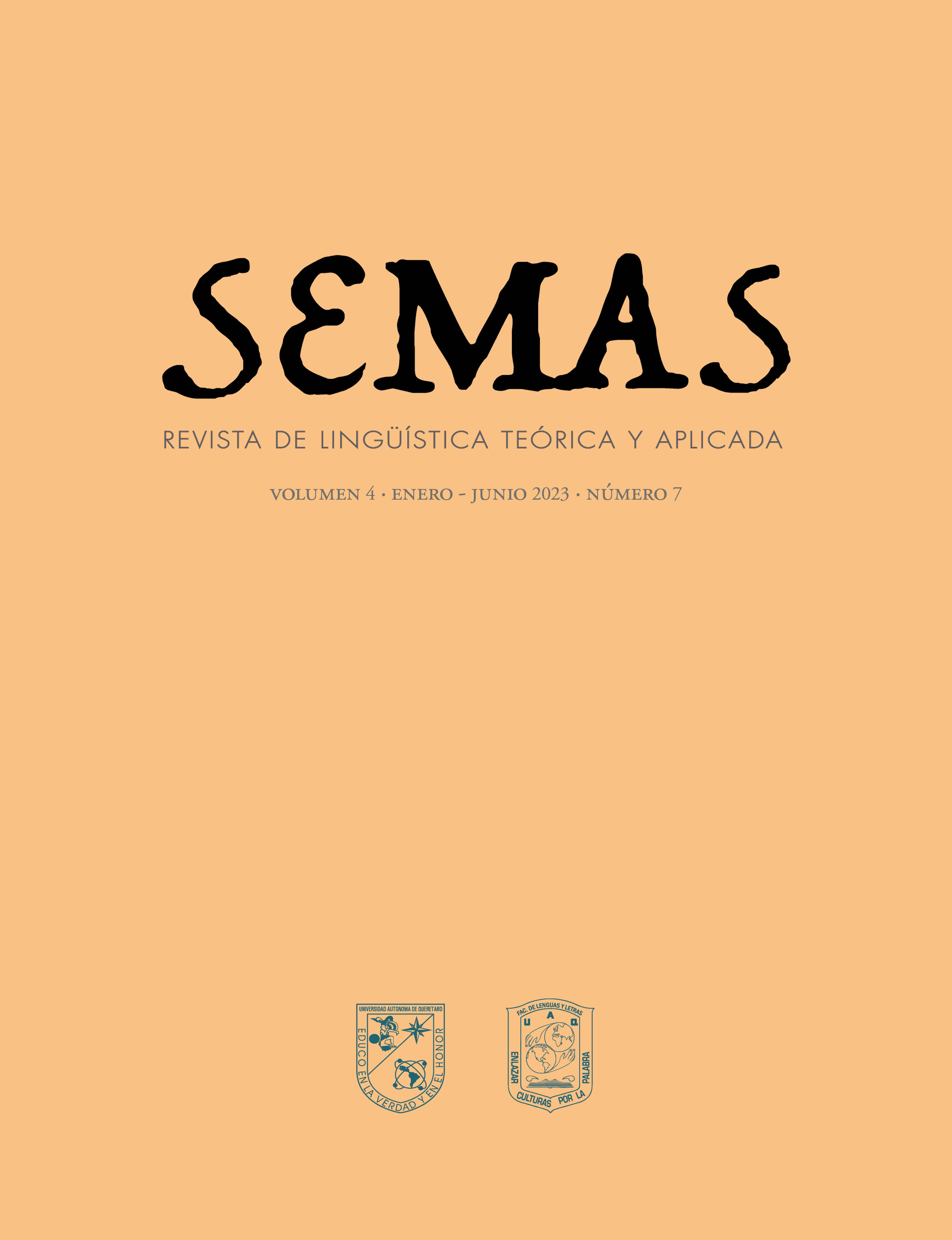Abstract
Constructions with impersonal haber (CHI) are assumed to be a type of existential construction, and as such, to pose restrictions on the pragmatic status of their only argument: to denote a new entity. Although exceptions to this are recognized, it is not clear which pragmatic contexts motivate them. Thus, the objective of this article is to examine what types or degrees of “newness” the CHI pivot instantiates. The data shows that, (i) pivots exhibit a wide range of pragmatic status, including new, inactive, accessible, and active (Prince 1981, Belloro 2012); (ii) the condition of novelty is not limited to pivots, but fluctuates between them, the temporo-spatial coda that restricts the predication, and the predicate itself. The results underline the importance of natural data when evaluating pragmatic categories involved in the description of grammatical phenomena, and contribute to a more adequate characterization of the “novelty condition” associated with the CHI.
References
Belloro, V. (2012). “La estructura informativa”, en C. González Vergara, L. Guerrero Valenzuela y R. Mairal Usón (Coords.), El funcionalismo en la teoría lingüística: la Gramática del Papel y la Referencia. Introducción, avances y aplicaciones (pp. 225-244). Akal.
Belloro, V. A. Galindo Morales, G. (2022). “Había una vez una construcción presentativa. Interpretaciones discursivas de las oraciones con haber impersonal”. Gragoatá, 27(58), pp. 180-208.
Benito de Moreno, C. (2016). “La pronominalización en las construcciones existenciales con haber: ¿hay restricciones o no las hay?” En C. de Benito Moreno (Ed.), En torno a “haber”. Construcciones, usos y variación desde el latín hasta la actualidad (pp. 209-237). Berlín: Peter Lang.
Bolinger, D. L. (1977). Meaning and Form. London: Longman.
Chafe, W. (1987). “Cognitive constraints on information flow”. Coherence and grounding in discourse, 11, pp. 21-51.
Chafe, W. (1994). Discourse, consciousness, and time: The flow and displacement of conscious experience in speaking and writing. Chicago: University of Chicago Press.
Hetzron, R. (1975). “The presentative movement or why the ideal word order is VSOP”. En C. N. Li (Ed.), Word Order and Word Order Change (pp. 346-388). Texas: Unversity of Texas Press.
Leonetti, M. (1999). “El artículo definido”. En I. Bosque y V. Demonte (Eds.), Gramática descriptiva de la lengua española, (Vol. I, pp. 787-890). Madrid: Espasa Calpe.
Matte Bon, F. (1995). Gramática comunicativa del español (Vol. 2), Madrid: EDELSA.
McNally, L. (2015) “Existential sentences crosslinguistically: variations in form and meaning”. Annual Review of Linguistics, 2(1), pp. 211-231.
Pato, E. (2016). “La pluralización de haber en español peninsular”. En C. De Benito Moreno (Ed.), En torno a “haber”. Construcciones, usos y variación desde el latín hasta la actualidad (pp. 357-392). Berlín: Peter Lang.
Prince, E. (1981). “Toward a taxonomy of given-new information”. En P. Cole (Ed.), Radical Pragmatics (pp. 223-256). New York: Academic Press.
Prince, E. (1992). “The ZPG letter: Subjects, Definiteness, and Information Status”. En S. Thompson y W. Mann (Eds.), Discourse Description: Diverse Analyses of a Fund Raising Text (pp. 295-325). Amsterdam: John Benjamins.
Real Academia Española y Asociación de Academias de la Lengua Española (RAE). (2009). Nueva gramática de la lengua española. Madrid: Espasa Libros, S. L.
Real Academia Española: Banco de datos CREA [en línea]. Corpus de referencia del español actual. http://ww.rae.es [Fecha de la consulta: 18 de mayo de 2022].
Suñer, M. (1982). The syntax and semantics of Spanish presentational sentence-types. Wahington D.C.: Georgetown University Press.
Universidad de Vigo: Banco de datos ADESSE [en línea]. Alternancias de Diátesis y Esquemas Sintáctico-Semánticos del Español http://webs.uvigo.es/adesse/ [Fecha de la consulta: 7 de febrero de 2019].

This work is licensed under a Creative Commons Attribution 4.0 International License.
Copyright (c) 2023 Semas

